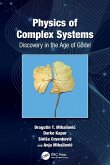This book addresses the timely subject of systems applications in astrobiology. It demonstrates how astrobiology - a multidisciplinary, interdisciplinary, and transdisciplinary field of science - can benefit from adopting the systems approach.
Astrobiology draws upon its founding sciences, such as astronomy, physics, chemistry, biochemistry, geology, and planetary sciences. However, astrobiologists can encounter difficulties working across these fields. The systems approach, we believe, is the best contemporary approach to consider astrobiology holistically. The approach is currently used in other fields, such as engineering, which uses systems analysis routinely.
Such an approach needs to be learned, both in principle and through examples, from the field. This book features chapters from experts across the field of astrobiology who have applied the systems approach. It will be a valuable guide for astrobiology students at the advanced undergraduate and graduatelevels, in addition to researchers in the field, both in academia and the space industry.
Key Features:
Offers a unique and novel approach to studying and understanding astrobiology
Encourages astrobiologists to apply a holistic systems approach to their work, rather than being bogged down in details
Imparts practical knowledge to readers which can be adopted in different research and job opportunities in the field of astrobiology
Astrobiology draws upon its founding sciences, such as astronomy, physics, chemistry, biochemistry, geology, and planetary sciences. However, astrobiologists can encounter difficulties working across these fields. The systems approach, we believe, is the best contemporary approach to consider astrobiology holistically. The approach is currently used in other fields, such as engineering, which uses systems analysis routinely.
Such an approach needs to be learned, both in principle and through examples, from the field. This book features chapters from experts across the field of astrobiology who have applied the systems approach. It will be a valuable guide for astrobiology students at the advanced undergraduate and graduatelevels, in addition to researchers in the field, both in academia and the space industry.
Key Features:
Offers a unique and novel approach to studying and understanding astrobiology
Encourages astrobiologists to apply a holistic systems approach to their work, rather than being bogged down in details
Imparts practical knowledge to readers which can be adopted in different research and job opportunities in the field of astrobiology








